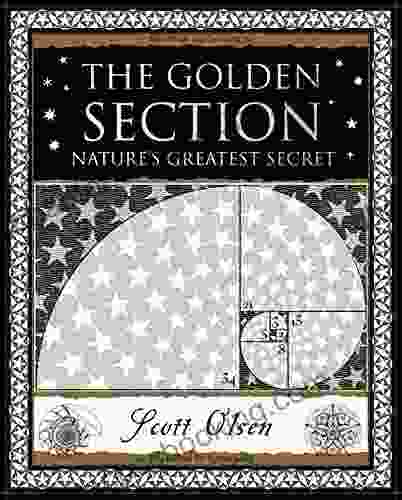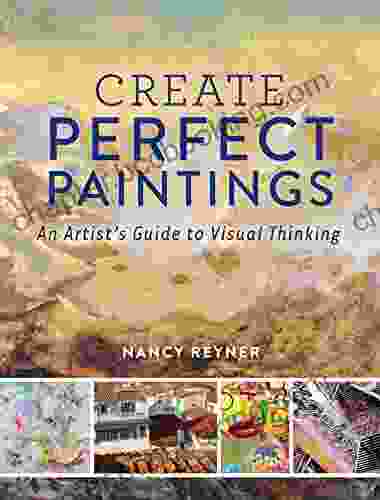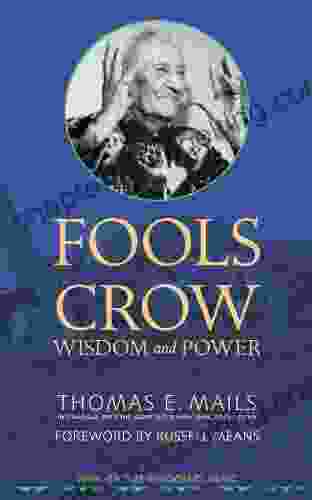The Golden Section: Nature's Greatest Secret - A Journey to Uncover the Hidden Order in the Universe

The Golden Section, also known as the Divine Proportion or the Golden Mean, is a special number found throughout nature and art. It is approximately 1.618 and has been used for centuries to create beautiful and harmonious works of art and architecture.
4.6 out of 5
| Language | : | English |
| File size | : | 10491 KB |
| Screen Reader | : | Supported |
| Print length | : | 68 pages |
| Lending | : | Enabled |
The Golden Section is a ratio that can be found everywhere in nature, from the spirals of seashells to the branching of trees. It is also found in the human body, in the proportions of our faces and bodies.
The Golden Section has been used by artists and architects for centuries to create beautiful and harmonious works of art and architecture. Some of the most famous examples of the Golden Section in art include the Mona Lisa by Leonardo da Vinci, the Parthenon in Greece, and the Taj Mahal in India.
In this book, we will explore the Golden Section in detail. We will learn about its history, its mathematical properties, and its applications in art, architecture, and design. We will also explore the spiritual and philosophical significance of the Golden Section.
Whether you are an artist, an architect, a designer, or simply someone who is interested in the beauty and harmony of the universe, this book is for you. The Golden Section is a fascinating and mysterious number that has captured the imagination of people for centuries. In this book, we will uncover the secrets of the Golden Section and explore its profound implications for our understanding of the universe.
The History of the Golden Section
The Golden Section was first discovered by the ancient Greeks. The Greek mathematician Euclid wrote about it in his book Elements around 300 BC. Euclid called the Golden Section the "extreme and mean ratio" because it is the ratio of two quantities such that the ratio of the larger quantity to the smaller quantity is equal to the ratio of the sum of the two quantities to the larger quantity.
The Golden Section was used by the Greeks in art and architecture. The Parthenon in Greece is a famous example of the Golden Section. The Parthenon is a temple that was built in the 5th century BC. It is considered to be one of the most beautiful buildings in the world. The Parthenon is full of examples of the Golden Section, including the ratio of the width of the temple to its height, the ratio of the height of the columns to their width, and the ratio of the size of the pediments to the size of the temple.
The Golden Section was also used by the Romans. The Roman architect Vitruvius wrote about the Golden Section in his book De Architectura around 15 BC. Vitruvius called the Golden Section the "golden mean" because he believed that it was the most beautiful and harmonious proportion.
The Golden Section continued to be used by artists and architects throughout the Middle Ages and the Renaissance. Leonardo da Vinci used the Golden Section in many of his paintings, including the Mona Lisa. The Mona Lisa is considered to be one of the most beautiful paintings in the world. The Mona Lisa is full of examples of the Golden Section, including the ratio of the width of the painting to its height, the ratio of the height of the Mona Lisa's head to her body, and the ratio of the size of her hands to the size of her head.
The Golden Section is still used by artists and architects today. It is considered to be a timeless and universal principle of beauty and harmony.
The Mathematical Properties of the Golden Section
The Golden Section is a number that is approximately equal to 1.618. It can be calculated using the following formula:
φ = (1 + √5)/2
The Golden Section is an irrational number, which means that it cannot be expressed as a simple fraction. It is also a transcendental number, which means that it is not a root of any polynomial equation with rational coefficients.
The Golden Section has some interesting mathematical properties. For example, it is the only number that is equal to its own reciprocal plus 1:
φ = 1/φ + 1
The Golden Section is also the only number that is equal to the sum of its two previous terms in the Fibonacci sequence:
φ = F(n) + F(n-1)
The Fibonacci sequence is a sequence of numbers in which each number is the sum of the two previous numbers. The Fibonacci sequence starts with 0 and 1, and continues as follows:
0, 1, 1, 2, 3, 5, 8, 13, 21, 34, ...
The Golden Section is closely related to the Fibonacci sequence. In fact, the Golden Section can be found in the ratio of successive terms in the Fibonacci sequence:
lim(F(n+1)/F(n)) = φ
The Golden Section is also related to the pentagon. The pentagon is a regular polygon with five sides. The Golden Section can be found in the ratio of the diagonal of a pentagon to its side:
φ = (1 + √5)/2 = d/s
where>d is the diagonal of the pentagon and>s is the side of the pentagon.
The Applications of the Golden Section
The Golden Section has been used for centuries in art, architecture, and design. It is considered to be a timeless and universal principle of beauty and harmony
In art, the Golden Section can be used to create compositions that are visually appealing and harmonious. For example, the Golden Section can be used to determine the proportions of a painting, the size of a sculpture, or the placement of objects in a scene.
In architecture, the Golden Section can be used to create buildings that are both beautiful and structurally sound. For example, the Golden Section can be used to determine the proportions of a building, the size of windows and doors, and the placement of rooms.
In design, the Golden Section can be used to create products that are both functional and aesthetically pleasing. For example, the Golden Section can be used to determine the proportions of a car, the size of a logo, or the placement of buttons on a website.
The Golden Section is a versatile and powerful tool that can be used to create beautiful and harmonious works of art, architecture, and design
4.6 out of 5
| Language | : | English |
| File size | : | 10491 KB |
| Screen Reader | : | Supported |
| Print length | : | 68 pages |
| Lending | : | Enabled |
Do you want to contribute by writing guest posts on this blog?
Please contact us and send us a resume of previous articles that you have written.
 Book
Book Novel
Novel Page
Page Chapter
Chapter Text
Text Story
Story Genre
Genre Reader
Reader Library
Library Paperback
Paperback E-book
E-book Magazine
Magazine Newspaper
Newspaper Paragraph
Paragraph Sentence
Sentence Bookmark
Bookmark Shelf
Shelf Glossary
Glossary Bibliography
Bibliography Foreword
Foreword Preface
Preface Synopsis
Synopsis Annotation
Annotation Footnote
Footnote Manuscript
Manuscript Scroll
Scroll Codex
Codex Tome
Tome Bestseller
Bestseller Classics
Classics Library card
Library card Narrative
Narrative Biography
Biography Autobiography
Autobiography Memoir
Memoir Reference
Reference Encyclopedia
Encyclopedia Michael Archer
Michael Archer Robbin Gourley
Robbin Gourley Ross Bonander
Ross Bonander Tara Wells
Tara Wells Stuart Shanker
Stuart Shanker Sandra Dallas
Sandra Dallas Michelle Carter Douglass
Michelle Carter Douglass Naktsang Nulo
Naktsang Nulo Monica Ruth Pattangall
Monica Ruth Pattangall Sheila Maloney
Sheila Maloney Mike Westin
Mike Westin Meryl Henderson
Meryl Henderson Patti Jean
Patti Jean Mike Bond
Mike Bond Michelle Roehm Mccann
Michelle Roehm Mccann Michael R Fletcher
Michael R Fletcher Ronald Reagan
Ronald Reagan Raphael Afil
Raphael Afil Paul Pritchard
Paul Pritchard Merlisa Lawrence Corbett
Merlisa Lawrence Corbett
Light bulbAdvertise smarter! Our strategic ad space ensures maximum exposure. Reserve your spot today!

 Alvin BellUnlocking the Secrets of Electrical Heart Activity: A Comprehensive Guide to...
Alvin BellUnlocking the Secrets of Electrical Heart Activity: A Comprehensive Guide to... Bret MitchellFollow ·6.8k
Bret MitchellFollow ·6.8k Jaime MitchellFollow ·12.2k
Jaime MitchellFollow ·12.2k Foster HayesFollow ·13.9k
Foster HayesFollow ·13.9k Douglas FosterFollow ·2.2k
Douglas FosterFollow ·2.2k Andrew BellFollow ·11k
Andrew BellFollow ·11k Evan SimmonsFollow ·7.1k
Evan SimmonsFollow ·7.1k W. Somerset MaughamFollow ·7.8k
W. Somerset MaughamFollow ·7.8k Cason CoxFollow ·5.8k
Cason CoxFollow ·5.8k

 Trevor Bell
Trevor BellUncover the Thrilling Mystery in "It Ain't Over, Cole...
Prepare yourself...

 Garrett Bell
Garrett BellHow to Stay True to Yourself and Stand Out From the Crowd
In a world that...

 Dennis Hayes
Dennis HayesDrill Instructor Strategies And Tactics For Success
Unleash Your Inner Warrior and Conquer...

 Guy Powell
Guy Powell101 Awesome Women Who Changed Our World: A Celebration of...
Throughout history,...

 Ashton Reed
Ashton ReedAn Iraq War Tank Commander's Inspirational Memoir of...
When he was just 19 years old, John Q....

 Dean Cox
Dean CoxLady Trader in the Transvaal: A Literary Safari through a...
Prologue: A Journey into the...
4.6 out of 5
| Language | : | English |
| File size | : | 10491 KB |
| Screen Reader | : | Supported |
| Print length | : | 68 pages |
| Lending | : | Enabled |










